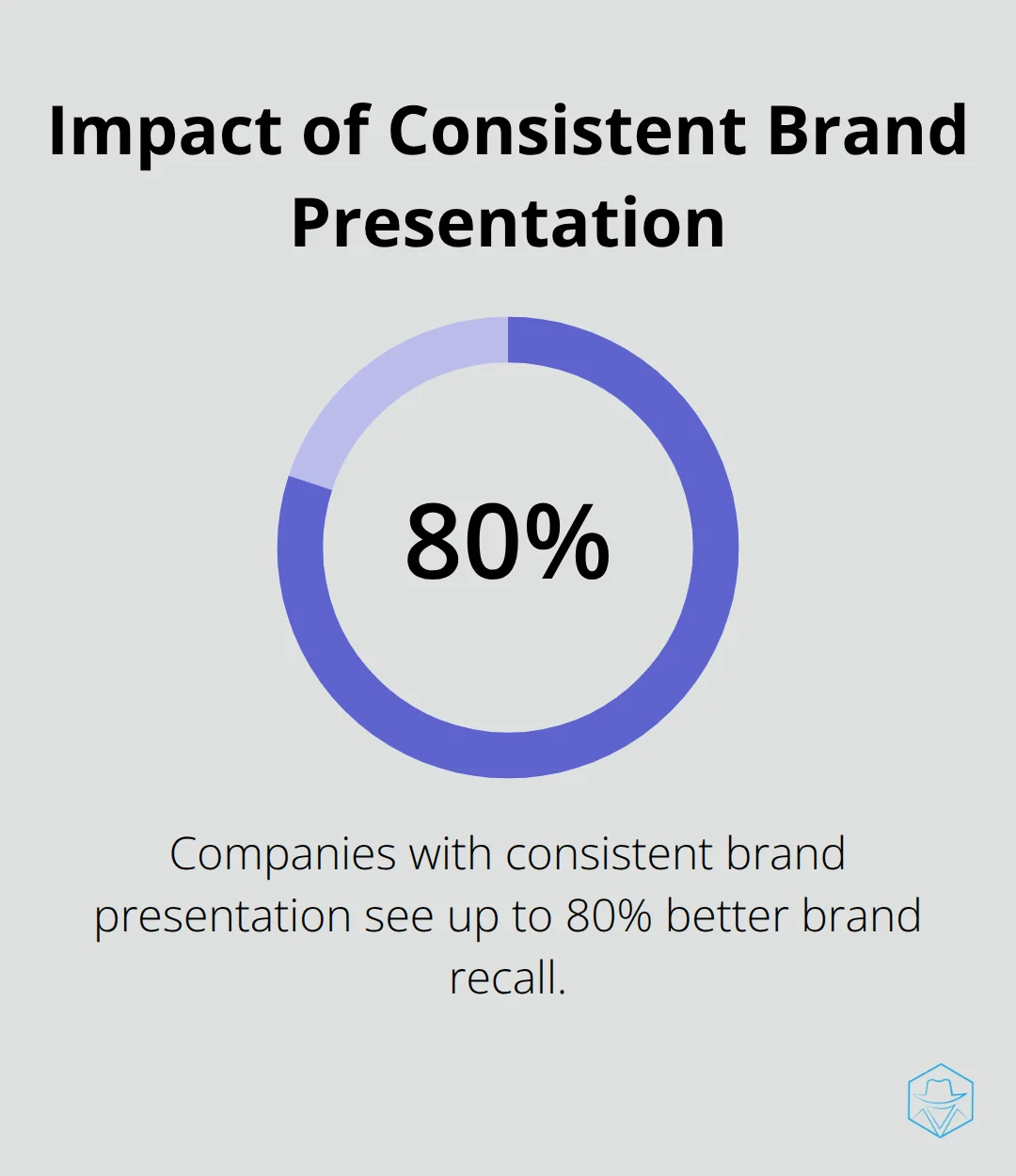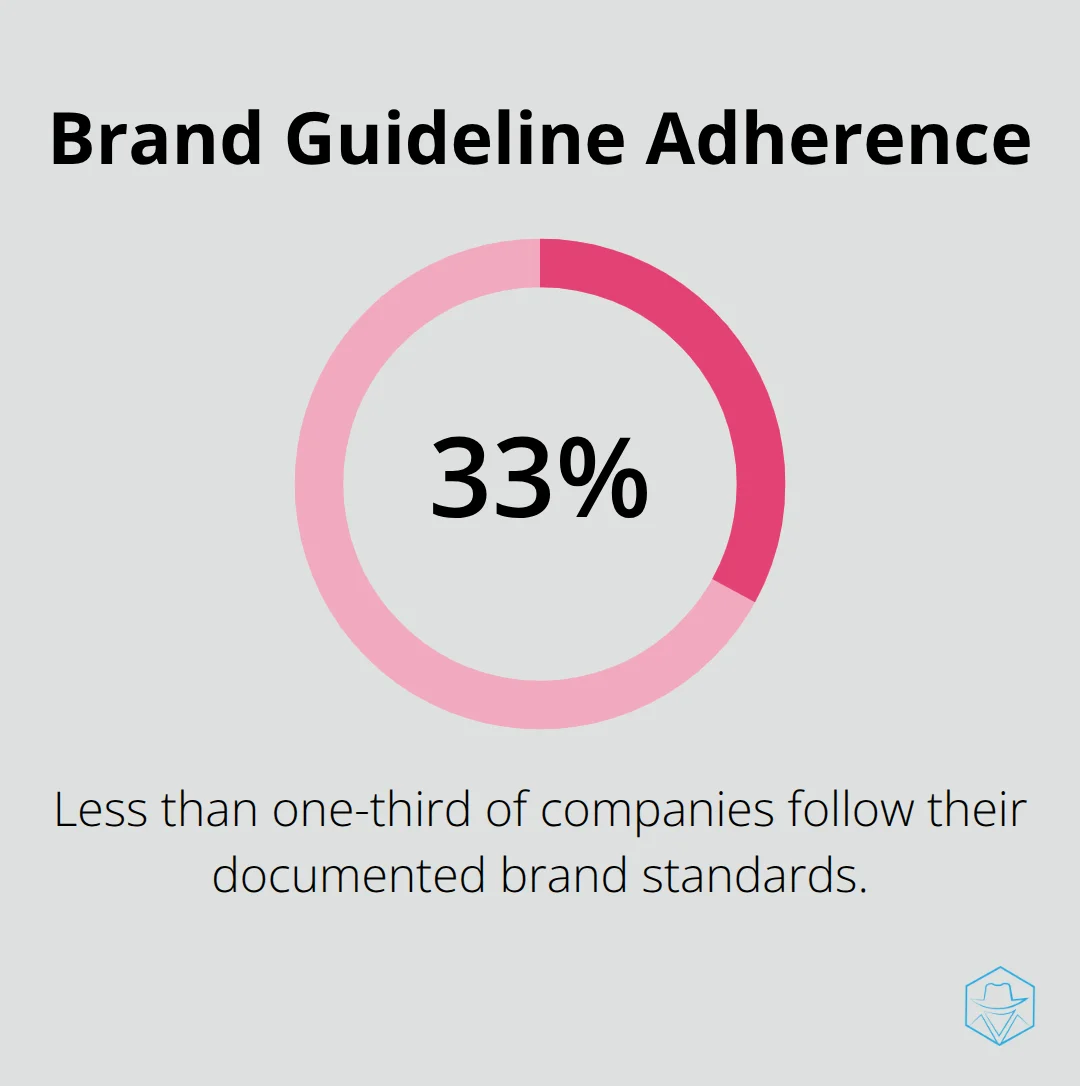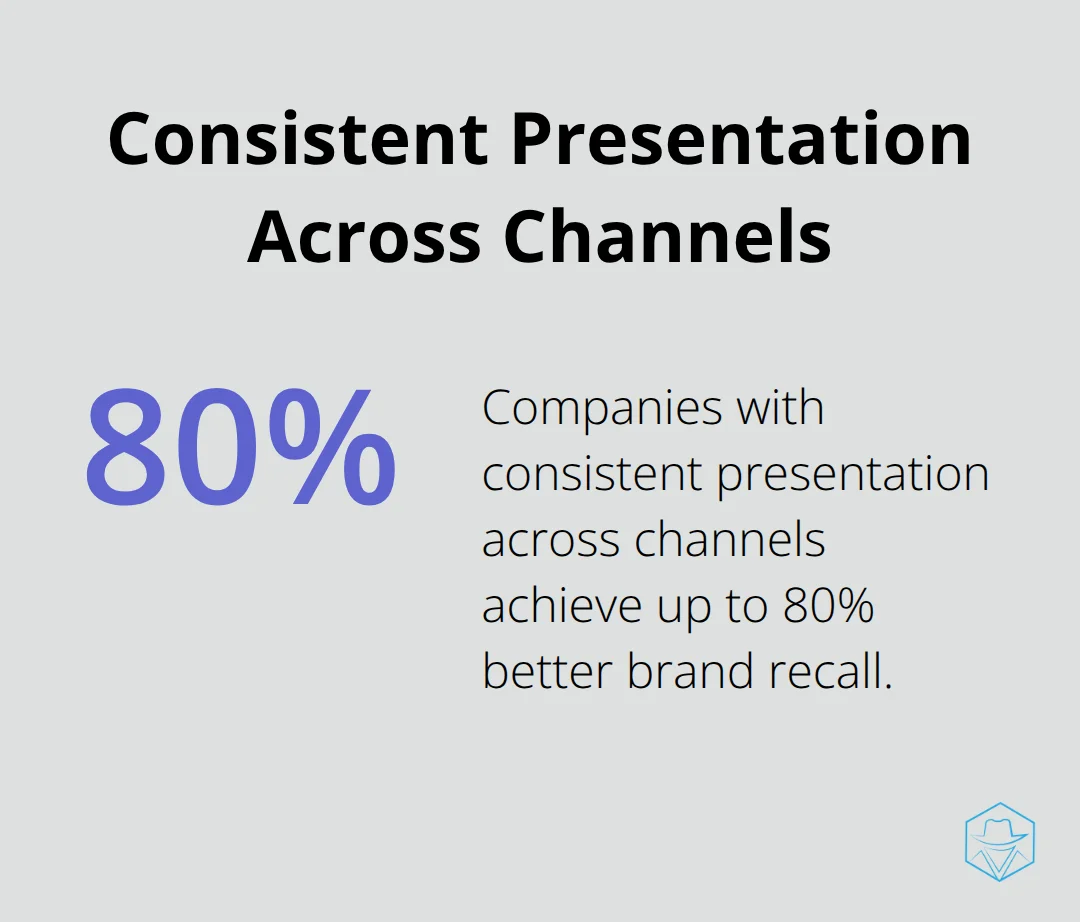Building a Consistent Voice Brand Identity Across Channels

Your customers hear your brand’s voice every time they interact with your content, emails, or social media posts. Yet most companies struggle to maintain the same voice brand identity across different platforms and teams.
At Drop Cowboy, we see businesses lose customer trust when their messaging feels inconsistent or disconnected. A strong voice brand identity builds recognition and creates lasting connections with your audience.
What Makes Voice Brand Identity Different
Voice brand identity encompasses the personality, tone, and language patterns that define how your business communicates with customers. This includes your choice of words, sentence structure, emotional approach, and communication style across every customer touchpoint. Research from Harvard Business Review shows that 64% of consumers connect with brands based on shared values, which makes voice brand identity a direct driver of customer relationships.
Core Components That Define Your Voice
The essential components include personality traits like friendly versus professional, tone variations from casual to formal, vocabulary choices, and message consistency. Your voice brand also covers response timing, conversation flow, and how you handle different situations. Companies with consistent brand presentation see up to 80% better brand recall according to Lucidpress research.

Voice Brand vs Visual Brand Elements
Visual brand focuses on colors, logos, and design elements that customers see, while voice brand identity shapes how customers feel during interactions. Visual elements get recognition 60,000 times faster than text, but voice brand builds the emotional connection that drives purchase decisions. Both work together (visual catches attention, voice creates connection), but voice brand influences whether customers trust you enough to buy.
How Consistent Communication Builds Recognition
Consistent voice brand identity directly impacts customer recognition and trust levels. Studies show 81% of consumers need to trust a brand before purchase, and consistent communication builds this trust faster than inconsistent messages. When customers experience the same personality and tone across your website, emails, social media, and customer service, they develop confidence in your brand reliability.
Brands that maintain consistent voice across channels report 20% higher customer satisfaction scores (according to Brandwatch data). Voice consistency also reduces customer confusion and creates familiarity that leads to repeat purchases and referrals.
Now that you understand what voice brand identity means and why it matters, the next step involves creating a strategic approach to develop your unique voice brand framework.
How Do You Create Your Voice Brand Framework
Map your brand personality through specific trait pairs rather than vague descriptors. Choose between authoritative versus approachable, technical versus conversational, or formal versus casual communication styles. Goldman Sachs uses formal expert language while Spotify maintains friendly empathy in customer interactions. Document these personality traits with concrete examples that show how each trait appears in real customer communications. Companies with clear brand guidelines see better consistency, yet less than one-third actually follow their documented standards (according to marketing research).

Build Voice Guidelines That Work
Create voice guidelines with specific language examples rather than abstract principles. Include approved vocabulary lists, forbidden phrases, sentence length preferences, and response templates for common situations. Duolingo maintains consistency through playful voice patterns and recognizable style across app content, social media posts, and marketing materials. Your guidelines should cover email signatures, social media captions, customer service responses, and website copy with exact phrase examples. Test different voice approaches through A/B testing to determine which resonates best with your target audience before you finalize standards.
Adapt Your Voice for Different Situations
Establish tone variations that match context while you maintain core personality traits. Use casual language for social media posts, professional tone for business emails, and supportive approach for customer service interactions. Disney successfully uses fun playful voice across channels while Ben & Jerry’s connects with customers through distinct personality traits. Train team members on these contextual variations with specific scenarios and approved response examples. Monitor social media analytics and customer feedback to refine tone variations based on real audience data rather than assumptions about preferences.
Document Voice Standards Across Teams
Create detailed voice documentation that teams can reference during daily communications. Include specific examples of approved phrases, tone adjustments for different platforms, and common scenarios with recommended responses. Amazon excels at consistent customer service by maintaining professional tone across all customer interactions. Your documentation should address email templates, social media responses, and phone scripts with exact wording examples. Regular team training sessions help employees understand and apply these guidelines effectively across all customer touchpoints.
With your voice brand framework established and documented, the next step involves putting these standards into practice across every customer communication channel.
How Do You Execute Voice Consistency Across Every Platform
Start with written communications by creating platform-specific templates that maintain your core voice while adapting to each channel’s requirements. Email templates should include standardized greetings, closing phrases, and response structures that reflect your brand personality. Social media posts need consistent hashtag usage, caption styles, and engagement responses that match your documented voice guidelines. Website copy requires uniform terminology, call-to-action language, and product descriptions that reinforce your brand identity. Companies that maintain consistent presentation across channels achieve up to 80% better brand recall (according to Lucidpress research).

Audio and Video Content Demands Stricter Standards
Audio and video content requires more precise voice control since customers hear actual speech patterns and vocal delivery. Create scripts with specific word choices, pacing instructions, and emotional tone markers for video presentations, podcasts, and customer service calls. Record reference audio samples that demonstrate approved pronunciation, speaking speed, and inflection patterns for team members to follow. Phone scripts need exact phrases for common scenarios while they maintain conversational flow that matches your brand personality. Brandwatch data shows brands with consistent voice delivery report 20% higher customer satisfaction scores compared to inconsistent communication approaches.
Team Training Requires Ongoing Voice Reinforcement
Implement monthly voice training sessions where team members practice real customer scenarios with approved language patterns and tone variations. Create role-play exercises that cover difficult customer situations, product explanations, and complaint resolution while you maintain brand voice consistency. Test team members on voice guidelines through written assessments and recorded practice sessions to identify gaps in understanding. Establish peer review processes where experienced team members evaluate new employee communications before customer contact. Regular voice audits across departments help identify inconsistencies and provide targeted training opportunities that strengthen overall brand communication effectiveness.
Monitor Voice Performance Across Channels
Track voice consistency through customer feedback surveys, social media engagement metrics, and customer service interaction reviews. Analyze response rates, customer satisfaction scores, and brand mention sentiment to measure voice effectiveness across different platforms. Use social media analytics tools to gather data on audience engagement and preferences that influence brand messages. Document voice performance patterns to identify which tone variations work best for specific customer segments and communication contexts.
Final Thoughts
Voice brand identity transforms how customers perceive and connect with your business across every communication channel. Companies that maintain consistent voice patterns see 20% higher customer satisfaction scores and build stronger trust relationships that drive repeat purchases. The investment in voice consistency pays dividends through improved brand recognition, reduced customer confusion, and increased loyalty rates.
Long-term benefits extend beyond immediate customer interactions. Consistent voice brand identity creates predictable customer experiences that generate positive word-of-mouth referrals and strengthen market positioning. Brands with unified communication approaches report better employee alignment, clearer internal messages, and more effective marketing campaigns that resonate with target audiences.
Implementation success requires ongoing monitoring and refinement based on customer feedback and engagement metrics (regular voice audits help identify inconsistencies while team training sessions maintain standards across departments). Modern communication platforms like Drop Cowboy offer voice cloning technology that helps businesses maintain consistent voice delivery across automated campaigns and personalized customer messages. Start by documenting your current voice patterns, then establish clear guidelines that teams can follow consistently across all customer touchpoints.
blog-dropcowboy-com
Related posts

June 27, 2025
PC Phone Dialer: Make Calls from Your Computer
Call easily from your computer with a PC phone dialer. Discover its benefits, streamline your communication, and enhance your productivity today.

May 6, 2025
Optimize Your Marketing Funnel with Automation
Boost conversions by streamlining processes with marketing funnel automation. Discover proven techniques for enhanced efficiency and increased sales.

May 19, 2025
Nortridge Software: Revolutionizing Loan Management
Explore how Nortridge Software transforms loan management with efficiency and precision, enhancing productivity in the financial sector.

June 4, 2025
NetSuite CRM: Integrate Your Business Processes
Integrate your business processes with NetSuite CRM system for seamless efficiency. Discover benefits, tools, and real-world success stories.

May 27, 2025
Microsoft Dynamics: Top Companies to Watch
Explore top Microsoft Dynamics companies to watch, fueling innovation and growth. Find out who leads the market and why they’re crucial players.

September 3, 2025
Best Practices for Creating Compelling Voicemail Drops
Learn voicemail drop best practices to engage effectively, maximize reach, and enhance customer interactions with our straightforward tips and insights.